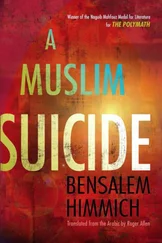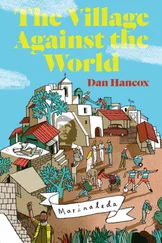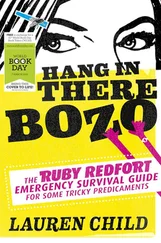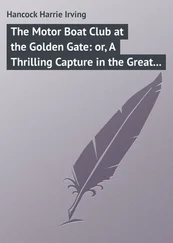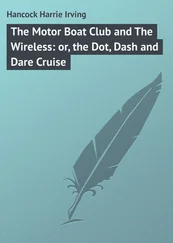2. Ibid., p. 196.
3. Al-Maqrizi, Homily for the Devout , Vol. 2, p. 35.
4. Ibn Taghribirdi, Bright Stars , p. 202. Ibn Taghribirdi mentions that in this same year, “Al-Husayn ibn Ahmad ibn al-Hajjaj Abu ‘Abdallah, the poet, died. Me grew up among the workers and writers in Baghdad and served as morals supervisor for ‘Izz al-Dawlah Bakhtiyar the Buyid. However he ignored his position in order to devote himself more to poetry, folly, and debauchery. I said: This very same Ibn al-Hajjaj was proverbial for his frivolities, jests, and lampoons. The majority of his poetry is comic and sarcastic verse, often obscene. Here is an example: “Heaven help me/with her cunt and my cock/they’ve both demanded sex/but it’s enough to chop off my erection.” [p. 205]
5. Ibn Kathir, The Beginning and the Ending , Vol. 12, p. 10.
6. As reported by ‘Abdallah ‘Inan, Al-Hakim bi-Amr Illah and the Secrets of the Fatimid Cause , p. 128 (based on the church manuscript, Siyar al-bi’ah ai-muqaddasa (Biographies of the Sacred Space), n.p.
7. Al-Maqrizi, Homily for the Devout , p. 55.
8. Mentioned (with an incorrect date) in Ibn Khaldun, Book of Exemplary Lessons , Vol. 4, p. 76.
9. Al-Maqrizi, Homily for the Devout , p. 97.
10. Ibid., p. 77.
11. Ibn Taghribirdi, Bright Stars , pp. 222–23.
12. Ibid., p. 232.
13. Al-Qalqashandi, Morning for the Night-Blind , Vol. 10, pp. 444–45.
14. Ibid., p. 443.
15. Ibn al-Athir, The Complete Work on History , Vol. 7, p. 236.
16. Al-Maqrizi, Homily for the Devout , p. 64,
17. Ibid., p. 66.
18. Ibn Taghribirdi, Bright Stars , p. 216.
19. Ibid., p. 217.
20. Ibid., pp. 229–30.
21. Al-Maqrizi, Homily for the Devout , pp. 54–55. It seems likely that al-Maqrizi is copying the information from al-Misbahi whose history has not come down to us.
22. Al-Kirmani, “Cheerful News,” p. 55.
23. Ibn Taghribirdi, Bright Stars , pp. 181–82
24. Al-Maqrizi, Homily for the Devout , p. 15.
25. Ibn Taghribirdi, Bright Stars , p. 187.
26. Al-Maqrizi, Homily for the Devout , p. 137.
27. Ibid., p. 29; al-Maqrizi, Lessons and Reports , Vol. I, p. 354.
28. Al-Maqrizi, Khitat, Lessons and Reports , Vol. I, p. 355.
Al-Antaki, Yahya ibn Said. Silat tarikh Utika (Appendix to the History of Eutychius).
Al-Dhahabi, al-Hafiz. Tarikh al-Islam (History of Islam). Cairo: n.p. 1985.
Ibn al-’Amid, al-Makin. Tarikh al-Muslimin (History of the Muslims).
Ibn al-Athir, al-Kamil fi ai-tarikh (The Complete Work on History), Vol. 7. Beirut: Dar al-Kitab al-’Arabi, n.d.
Ibn Iyas, Bada ’I‘ al-zuhur fi waqa ’i‘ al-duhur (Bright Flowers Concerning the Events of the Ages). Cairo: Dar Ihya’ al-Kutub al-’Arabiyyah, 1984.
Ibn Kathir. al-Bidaya wa-l-nihaya (The Beginning and the Ending). Vol. 12. Beirut: Dar al-Kutub al-’Ilmiyyah, 1987.
Ibn Khaldun. Kitab al-‘Ibar (Book of Exemplary lessons). Vol. 4. Beirut: Dar al-Fikr, 1981.
Ibn Khallikan. Kitab wafayat al-a’yan (Book on the Deaths of Important People). Karachi: Pakistan Historical Society, 1961.
Ibn al-Qalanisi. Dhayl tarikh Dimashq (Afterword to the History of Damascus). Damascus: Dar Hassan. 1983.
Ibn al-Sabi. Kitab tarikh — Takmilat kitab Thabit ibn Sinan (Book of History — Completion of Thabit Ibn Sinan’s Book of History).
Ibn Taghribirdi. al-Nujum al-zahira ft muluk Misr wa-t-Qahira (Bright Stars Concerning the Rulers of Egypt and Cairo). Vol.4. Cairo: Dar al-Kutub al-Misriyyah, 1933.
‘Inan, ‘Abdallah. al-Hakim bi-Amr Illah wa-asrar al-da ‘wa al-fatimiya (Al-Hakim bi-Amr Illah and the Secrets of the Fatimid Cause). Cairo: 1959.
Al-Kirmani. “Risala: Mabasim al-bisharat bi-l-Imam al-Hakim bi-Amr lllah,” (Essay: Cheerful News Regarding the Imam. al-Hakim bi-Amr Illah) in Muhammad Kamil Husayn, Ta’ifat al-Duruz . Cairo: Dar al-Ma’arif, 1962.
Al-Maqrizi. Itti‘az al-hunafa ‘bi-akhbar al-a ‘imma al-fatimiyin al-khulafa ’ (Homily for the Devout Concerning Reports on the Fatimid Imams and Caliphs). Vol. 2. Cairo, 1972.
______. al-Mawa ‘iz wa-l-ikhtibar fi dhikr al-khitat wa-l-athar (Lessons and Reports Concerning Cairo Quarters and Monuments). Cairo: French Institute for Archaeology, 1911.
Al-Qalqashandi. Subh al-a ‘sha fi sina ‘at-insha ’ (Morning for the Night-Blind Concerning the Craft of Composition), Vol. 10. Beirut: Dar al-Kutub al-’Ilmiyyah, 1986.
Sibt ibn al-Jawzi. Mir’ at al-zaman fi tarikh al-’yan (Mirror of the Times Concerning the History of Notables). Beirut: Dar al-Shuruq, 1985
Al-Wazir Jamal al-din. Akhbar al-dawla al-munqati’ah (Reports on the Interrupted Regime).
Dates in the glossary are given in their Islamic (Hijra) form followed by their Gregorian equivalent
‘Alawite:a Shi’ite sect whose name is based initially on that of ‘Ali, the Prophet Muhammad’s cousin and son-in-law, who is the foundational figure in the ‘Shi’at ‘Ali’ or Shi’a; more specifically the group is named after ‘Ali al-Hadi (d. 254/868), the tenth of the Shi’ite Imams. The group, also known as ‘Nusayris.’ supported the notion of the divine nature of the Shi’ite Imam.
Canal:the khalij , a canal that extended North-East from the River Nile and was a prominent landmark of the city of Cairo until it was filled in during the nineteenth century. It is now Port Said Street.
Coptic festivals:Nawruz is the Coptic New Year’s Day festival, celebrated in September; Pentecost is the traditional Christian celebration of the fifty days following the festival of Easter, culminating with Pentecost Sunday which celebrates the descent of the Holy Spirit.
Dar al-Hikmah:the most famous ‘Dar al-Hikmah’ (House of Wisdom) was a library founded by the ‘Abbasid Caliph, al-Ma’mun (d. 217/833), From historical accounts, it would appear that al-Hakim bi-Amr Illah established a similar institution in Cairo.
Fatimid festivals:the ceremonies involving the opening of the khalij (see Canal ) and the Nile flood were connected with the River Nile and the importance of its annual flood to the economy of the region {that is, before the construction of the Aswan High Dam, which now controls the river’s flow further south). Both are described in detail in Edward Lane’s renowned account. Manners and Customs of the Modern Egyptians (1863).
Kiswa:a black, brocaded carpet used to cover the Ka’ba in Mecca. Traditionally made in Egypt, it was transported to Mecca as part of the pilgrimage caravan.
Maliki School:one of the four major ‘schools’ (Ar. madhhab ) of Islamic law, named after its founder, Malik ibn Anas (d. 179/796).
Mulukhiya:a favorite Egyptian dish to this day; a thick soup made from a herb usually known in English as ‘Jews’ mallow.’
Smoke Verse:Qur’an (8:26); “So be on watch for a day on which the heavens will bring a clear smoke.”
Umm ‘Amr’s donkey:an ancient Arab proverb dating from pre-Islamic times. Umm ‘Amr was a woman with a curse on her, who was expelled from her tribe and rode off on her donkey. The proverb relates that “she never came back, nor did her donkey.” The donkey is therefore a metaphor for any undesirable person or entity who suffers a similar fate,
Читать дальше



